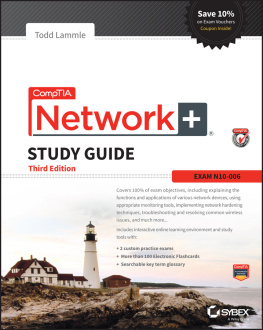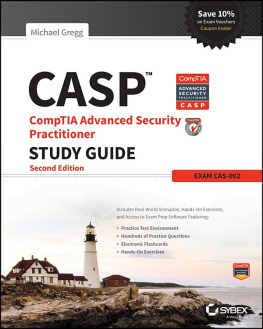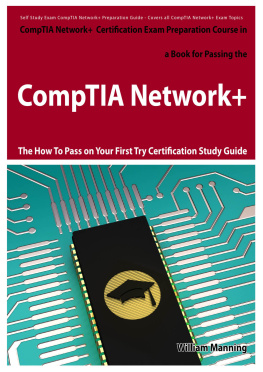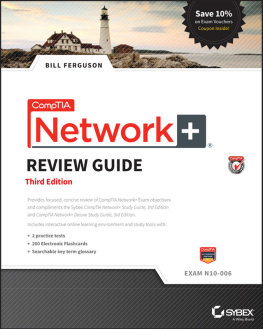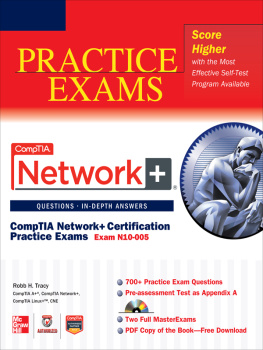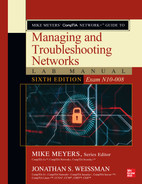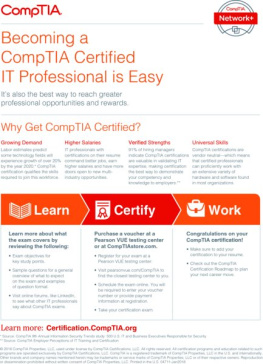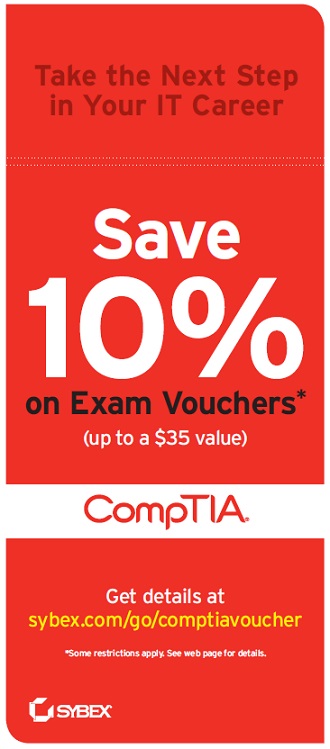
Senior Acquistions Editor: Kenyon Brown
Development Editor: Kim Wimpsett
Technical Editors: Quentin Doctor and Troy McMillan
Production Editor: Christine O'Connor
Copy Editor: Judy Flynn
Editorial Manager: Mary Beth Wakefield
Production Manager: Kathleen Wisor
Associate Publisher: Jim Minatel
Media Supervising Producer: Richard Graves
Book Designers: Judy Fung and Bill Gibson
Proofreader: Jennifer Bennett, Word One New York
Indexer: Robert Swanson
Project Coordinator, Cover: Brent Savage
Cover Designer: Wiley
Cover Image: Wiley
Copyright 2015 by John Wiley & Sons, Inc., Indianapolis, Indiana
Published simultaneously in Canada
ISBN: 978-1-119-02124-7
ISBN: 978-1-119-02126-1 (ebk.)
ISBN: 978-1-119-02125-4 (ebk.)
No part of this publication may be reproduced, stored in a retrieval system or transmitted in any form or by any means, electronic, mechanical, photocopying, recording, scanning or otherwise, except as permitted under Sections 107 or 108 of the 1976 United States Copyright Act, without either the prior written permission of the Publisher, or authorization through payment of the appropriate per-copy fee to the Copyright Clearance Center, 222 Rosewood Drive, Danvers, MA 01923, (978) 750-8400, fax (978) 646-8600. Requests to the Publisher for permission should be addressed to the Permissions Department, John Wiley & Sons, Inc., 111 River Street, Hoboken, NJ 07030, (201) 748-6011, fax (201) 748-6008, or online at http://www.wiley.com/go/permissions.
Limit of Liability/Disclaimer of Warranty: The publisher and the author make no representations or warranties with respect to the accuracy or completeness of the contents of this work and specifically disclaim all warranties, including without limitation warranties of fitness for a particular purpose. No warranty may be created or extended by sales or promotional materials. The advice and strategies contained herein may not be suitable for every situation. This work is sold with the understanding that the publisher is not engaged in rendering legal, accounting, or other professional services. If professional assistance is required, the services of a competent
professional person should be sought. Neither the publisher nor the author shall be liable for damages arising herefrom. The fact that an organization or Web site is referred to in this work as a citation and/or a potential source of further information does not mean that the author or the publisher endorses the information the organization or Web site may provide or recommendations it may make. Further, readers should be aware that Internet Web sites listed in this work may have changed or disappeared between when this work was written and when it is read.
For general information on our other products and services or to obtain technical support, please contact our Customer Care Department within the U.S. at (877) 762-2974, outside the U.S. at (317) 572-3993 or fax (317) 572-4002.
Wiley publishes in a variety of print and electronic formats and by print-on-demand. Some material included with standard print versions of this book may not be included in e-books or in print-on-demand. If this book refers to media such as a CD or DVD that is not included in the version you purchased, you may download this material at http://booksupport.wiley.com. For more information about Wiley products, visit www.wiley.com.
Library of Congress Control Number: 2014958356
TRADEMARKS: Wiley, the Wiley logo, and the Sybex logo are trademarks or registered trademarks of John Wiley & Sons, Inc. and/or its affiliates, in the United States and other countries, and may not be used without written permission. CompTIA Network+ is a trademark of CompTIA Properties, LLC. All other trademarks are the property of their respective owners. John Wiley & Sons, Inc. is not associated with any product or vendor mentioned in this book.
Acknowledgments
Kim Wimpsett was the development editor of this, the newest book in the Sybex CompTIA series. Thank you, Kim, for working so hard on this book with me.
Kenyon Brown is my new acquisitions editor for this book. Thank you, Kenyon, for making this book a reality!
In addition, Christine O'Connor was an excellent production editor, and she worked really hard to get the book done as quickly as possible, without missing the small mistakes that are so easy to overlook. I am always very pleased when I hear that she will be working with me on a new project. Judy Flynn was my copy editor, and she was patient, helpful, and detailed yet worked extremely hard to get this book on the shelf as quickly as possible, and for that I thank her tremendously.
Quentin Docter reviewed each topic in this guide, scrutinizing the material until we both agreed it was verifiably solid. Thank you, Quentin!
Troy McMillian literally hashed and rehashed each topic in this guide with me at all hours of the day and night. Thank you, Troy, yet again!
About the Authors
Todd Lammle, CompTIA Network+, CCSI, CCNA/CCNP, is the authority on network certification and internetworking. He is a world-renowned author, speaker, trainer, and consultant. Todd has over 25 years of experience working with LANs, WANs, and large licensed and unlicensed wireless networks. He's president and CEO of GlobalNet Training and Consulting, Inc., a network-integration and training firm based in Boulder, Colorado; Dallas, Texas; and San Francisco, California. You can reach Todd through his forum at www.lammle.com/networkplus.

Introduction
If you're like most of us in the networking community, you probably have one or more network certifications. If that's you, you're very wise in choosing a CompTIA Network+ (N10-006) certification to proudly add to your repertoire because that achievement will make you all the more valuable as an employee. In these challenging economic times, keeping ahead of the competitioneven standing out among your present colleaguescould make a big difference in whether you gain a promotion or possibly keep your job instead of being the one who gets laid off! Or maybe this is your first attempt at certification because you've decided to venture into a new career in information technology (IT). You've realized that getting into the IT sector is a good way to go because as the information age marches on, the demand for knowledgeable professionals in this dynamic field will only intensify dramatically.
Either way, certification is one of the best things you can do for your career if you are working in, or want to break into, the networking profession because it proves that you know what you're talking about regarding the subjects in which you're certified. It also powerfully endorses you as a professional in a way that's very similar to a physician being board certified in a certain area of expertise.
In this book, you'll find out what the Network+ exam is all about because each chapter covers a part of the exam. I've included some great review questions at the end of each chapter to help crystallize the information you learned and solidly prepare you to ace the exam.
A really cool thing about working in IT is that it's constantly evolving, so there are always new things to learn and fresh challenges to master. Once you obtain your Network+ certification and discover that you're interested in taking it further by getting into more complex networking (and making more money), the Cisco CCNA certification is definitely your next step; you can get the skinny on that and even more in-depth certifications on my blog at
Next page
